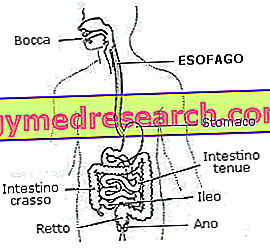Related articles: Meningioma
Definition
A meningioma is a brain tumor that originates from the protective membranes (called meninges) that surround and protect the brain and spinal cord. On the basis of histological characteristics, aggressiveness and the risk of recurrence, benign meningiomas (non-cancerous, low risk of recurrence and slow growth), atypical (greater risk of recurrence and / or rapid growth) and malignant (invade adjacent tissues and are associated with high recurrence rates).
The underlying causes of their onset are not well understood, although some environmental and genetic factors appear to be implicated in the pathogenesis. Patients exposed to radiation and neurofibromatosis (NF-2 and NF-1) are at greater risk of developing meningiomas.
Most common symptoms and signs *
- Anosmia
- cacosmia
- Seizures
- Dysarthria
- Dysphagia
- Bladder dysfunction
- Papilla edema
- hemiparesis
- Exophthalmos
- Tingling in the head
- Hydrocephalus
- Intracranial hypertension
- Hearing loss
- Hypoaesthesia
- Headache
- Nystagmus
- Paresthesia
- Loss of coordination of movements
- Loss of balance
- Reduced vision
- Drowsiness
- Confusional state
- Fainting
- Dizziness
- Double vision
- He retched
Further indications
Symptoms vary depending on the location of the tumor and whether or not other tissues or structures are involved.
Benign meningiomas are characterized by slow progression. Small tumors (<2 cm in diameter) are often asymptomatic. Often, symptoms begin to appear when the mass is large enough to compress adjacent parts of the brain or spinal cord, so patients may experience various types of neurological deficits. Headaches, visual problems (visus deficiency, nystagmus, diplopia, papilledema and exophthalmos) and olfactory (anosmia), hearing loss, fainting, dizziness, cognitive and sensory deficits may occur. When meningioma is localized near cranial nerves, dysphagia, dysarthria, disturbances of ocular motility and numbness of the face may occur. Sometimes intracranial hypertension, focal epileptic seizures, lack of strength, disturbances in balance and gait may occur. Furthermore, if the tumor invades and distorts the adjacent bone, it can cause hyperostosis.
Anaplastic / malignant meningiomas, on the other hand, tend to expand more rapidly inside the brain cavity and to connect to blood vessels, so the metastatic cells can enter the circulatory stream and reach other districts of the body. Metastases often start in the lungs.
Spinal cord meningiomas are usually found in the vertebral canal between the neck and the abdomen. These tumors are almost always benign and occur commonly with pain, incontinence, paralysis, weakness and stiffness in the arms and legs.
The diagnosis of meningiomas involves performing some imaging tests, such as computerized tomography (CT) and magnetic resonance imaging (NMR) with contrast medium.
Treatment options include periodic monitoring, surgical removal and / or radiotherapy. Not all meningiomas require an immediate therapeutic approach: in some cases, medical intervention can be delayed and become necessary only if, and when, the tumor causes significant symptoms.



